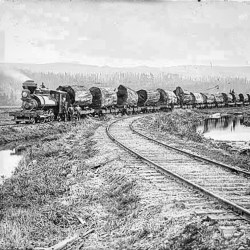
Redwood to Build an EmpireTwo million acres of old-growth redwood forests graced a 20 to 30 mile deep swath of land from Big Sur to southwestern Oregon. They were the keystone species in a rich and diverse ecosystem. Indigenous people have lived in harmony with redwoods for more than 10,000 years. Then in the mid-1800s European immigrants came in vast numbers seeking fortune from gold in the hills and rivers. Soon, they discovered the extraordinary utility of lumber from these massive redwood trees with their fire and insect resistant qualities. Early lumbering methods were labor intensive so cutting of the trees was a slow process. However, with the introduction of steam-power, processing of trees become much faster and cost-effective. After World War 2, vast hillsides of redwood forest quickly disappeared to the mills in Orick, Eureka, and Scotia. By the mid-1960s, only a small fraction of old-growth trees remained. 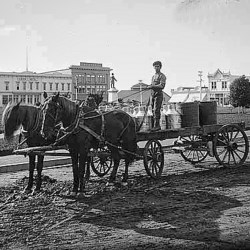
Farming and CommerceThe region surrounding Redwood National and State Parks includes broad bays, coastal wetlands, navigable rivers, high prairies, and a rugged coastline. As the lumber business grew and increasing numbers of people moved into the area, the demand for services and goods expanded. Cattle ranching and dairy provided the fuel for workers settling in the towns of Eureka, Arcata, and Crescent City. People traveling by stage needed places to stay and California’s political establishment began to understand the importance of the redwood economy to the state’s position on the world stage. 
Exclusion and EradicationA dark chapter of California’s history was written in redwood country as European immigrants in the last half of the 19th century violently displaced vibrant Native American cultures with a history that stretched back over 10,000 years. Genocidal tactics backed with legal restrictions nearly exterminated multiple tribes in the area. As Chinese workers also arrived to find opportunities in the growing towns, mills, and farms, this xenophobic rage was turned on them, albeit with less deadly results. Justified by the Chinese Exclusion Act of 1892, Chinese workers were expelled from the region in successive waves and to this day, the region remains only lightly populated by people of Asian/Pacific Islander descent. 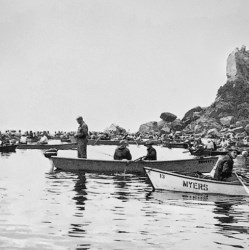
Ocean BountySalmon and whales once powered a lucrative and dynamic fishing industry on the North Coast. However, the salmon runs petered out as timber industry practices and dams upstream damaged fragile riparian ecosystems in the spawning waters of the Klamath, Eel, and Smith Rivers. The whaling business came to a halt due to over-fishing, dried-up demand for whale oil, and society’s change of ethical mind about hunting and killing whales. 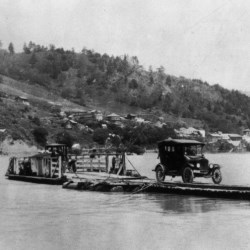
Roads to CivilizationAs the demand for redwood lumber grew, particularly in the aftermath of the 1906 San Francisco Earthquake and Fire, so did the need for overland transportation routes. Railroad companies carved their narrow paths through forests and across rivers. The advent of the automobile gave rise to the need for roads connecting the redwood coast with the markets and transportation hubs of the San Francisco area. Thus, the Redwood Highway, or U.S. 101 was born. 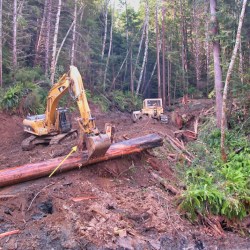
Protection and RestorationEarly 20th century logging of redwood forests forced citizen groups, often led by women, to act to protect these leviathans of the land. Local chapters of the California Federation of Women’s Clubs made the first protective purchases of old-growth redwood groves. The Save-the-Redwoods League was formed in the 1920s, led by Newton B. Drury. Drury then guided the California State Parks to set aside major tracts of virgin redwood forest. The federal government established Redwood National Park in 1968 to protect pockets of remaining redwoods. The national park was expanded in 1978 to protect larger watersheds and the National Park Service was mandated to restore tens of thousand of acres of recently logged lands. 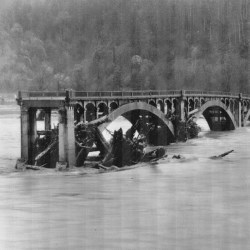
Power of the EarthWater - a lot of it. 40 to 100 inches of rain fall each year on the north coast. Rivers swell and sometimes flood with devastating impact. Landslides destroy roads and rail lines. The ocean’s unrelenting force carves a rugged coastline, and occasional tsunamis explode onto the land damaging towns, village sites, and harbors. |
Last updated: November 28, 2023
